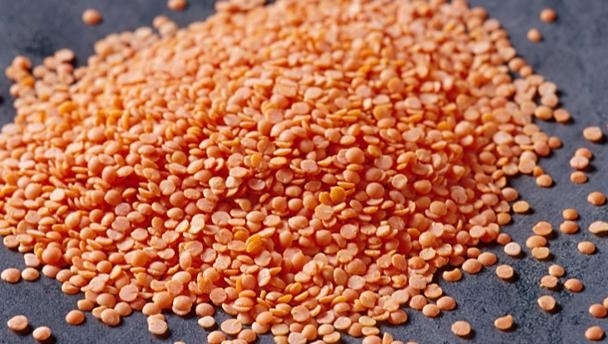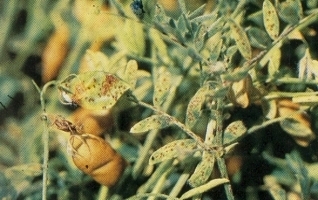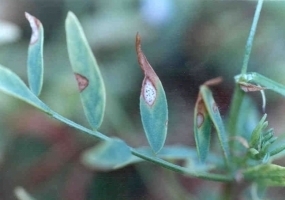Climate
-
Temperature
18°C-20°C -
Rainfall
100cm -
Sowing Teamperature
18°C-20°C -
Harvesting Temperature
22°C-24°C

















Lentil can be grown on all type of soil. Saline, Alkaline or waterlogged soils should be avoided. Soil should be friable and weed free so that seed could be placed at uniform depth.
Haryana Masur 1: Suitable for growing in whole Haryana. It is resistant to pest and disease. Ready to harvest in 140 days. Gives average yield of 6.5-7 qtl/acre.
Sapna: Medium duration variety suitable for irrigated areas of Haryana. Ready to harvest in 140 days. Grains are bold, flat, gray color with dark black spots on it. Resistant to pod borer. Gives average yield of 6 qtl/acre.
Garima: Suitable for irrigated as well as unirrigated areas. Leaves are broad and having dark green color. Grains are bigger compared to SAPNA variety. Ready to harvest in 135 days. Gives average yield of 6 qtl/acre.
Other States Varieties
Bombay 18: Ready to harvest in 130-140 days. Gives average yield of 4-4.8 qtl/acre.
DPL 15: Ready to harvest in 130-140 days. Gives average yield of 5.6-6.4 qtl/acre.
DPL 62 : Ready to harvest in 130-140 days. Gives average yield of 6-8 qtl/acre.
L 4632
K 75: Ready to harvest in 120-125 days. Gives average yield of 5.6-6.4qtl/acre.
Pusa 4076: Ready to harvest in 130-135 days. Gives average yield of 10-11 qtl/acre.
Pant Lentil 4: Ready to harvest in 140-145 days. Gives average yield of 6.4 qtl/acre.
Lens 4076 (Shivalik) : Ready to harvest in 130-135 days. Gives average yield of 5.6 qtl/acre.
Pusa Vaibhav: Ready to harvest in 130-135 days. Gives average yield of 8-9.6 qtl/acre.
IPL 406 (Angoori): Ready to harvest in 120-155 days. Gives average yield of 6.8 qtl/acre.
Pant Lentil 7: Ready to harvest in 147 days. Gives average yield of 6 qtl/acre.
Pant Lentil 8: Ready to harvest in 135 days. Gives average yield of 6 qtl/acre.
In case of light soils, less tillage is required to prepare seed-bed. 2-3 ploughings are sufficient for proper pulverization of land. Leveling of field should also be done for proper distribution of water. Proper moisture should be present in the field at the time of sowing seeds.
Popular Cropping pattern for Lentil in Haryana: Rice-Lentil, Cotton-Lentil, Groundnut-Lentil etc.
Time of sowing
Seed sowing should be completed in November month. Further delay will result in yield loss.
Spacing
Seeds should be sown in lines 22.5cm apart. Under late sowing conditions, row- spacing should be reduced to 18cm.
Sowing Depth
Sow seeds at depth of 3-4cm.
Method of sowing
For Sowing use pora method or seed cum fertilizer drill. Seed can also be broadcasted manually.
Seed Rate
Seed rate of 12-15 kg/acre is optimum. For late sowing crop, use and bold seeded varieties use seed rate of 18-20 kg/acre.
Seed Treatment
Seed should be treated with Captan or Thiram @3gm/kg of seed before sowing.
| Fungicide name | Quantity (Dosage per kg seed) |
| Captan | 3gm |
| Thiram | 3gm |
Fertilizer Requirement (kg/acre)
| UREA | SSP | MURIATE OF POTASH |
| 16 | 100 | - |
Nutrient Requirement (kg/acre)
| NITROGEN | PHOSPHORUS | POTASH |
| 6 | 16 | - |
At time of sowing, apply 6 kg of Nitrogen (in form of 16 kg of Urea) and 16 kg of P2O5 (in form of 100 kg of Superphosphate) when seeds are inoculated with rhizobium culture.
Zinc deficiency is usually observed four weeks after sowing. As a preventive measure, in zinc deficient soil apply Zinc Sulphate@10 kg/acre at time of last ploughing. If deficiency observed in standing crop, Spray crop with Zinc Sulphate@0.5% and Urea@2.5% solution for two times with interval of 10-15 days.
To control weed take two hoeings at 30th and 60th days interval. 45-60 days of weed free period should be maintained for proper crops stand and yield. Pre-emergence application of Stomp 30EC@550 ml/acre with one hoeing at 50 days after sowing, helps in effective weed control.
Lentil is mainly grown as a rainfed crop. It requires 2-3 irrigations in case of irrigated conditions depending upon the climatic conditions. First irrigation should be provided 4 weeks after sowing and second at flowering stage. Pod formation and flower initiation are critical stages of water requirement.

Pod borer: It mainly fed upon green plant leaves, flowers, pod-grains. It is a serious pest of lentil which cause excessive yield loss. It can be controlled by spraying of 900g Hexavin 50WP in 90 litres of water per acre at the time of flowering. Spray should be repeated after 3 weeks if necessary.

Rust: Yellowish white pustules develop on stem branches, pods and leaves of plants. They may appear singly or in groups. Small pustules may grow into large pustules slowly. In severe cases, affected plants may dry up and give burnt appearance. Growing of tolerant varieties can help to prevent rust.

Blight: Dark brown spots are formed on stem, leaves and pods. These lesions slowly elongate. Sometimes spots are formed in the form of concentric rings. Use disease free seed, destroy diseased plant debris after harvest to reduce the chances of blight.
Harvesting should be done at proper time when plant dry up and pods mature. Over-ripening of pods should be avoided as produce may be lost due to shattering. Plants should be beaten by sticks to thresh. After threshing, seed is cleaned and dried up in the sunshine. Moisture content should be 12% at the time of storage.
1.Punjab Agricultural University Ludhiana
2.Department of Agriculture
3.Indian Agricultural Research Instittute, New Delhi
4.Indian Institute of Wheat and Barley Research
5.Ministry of Agriculture & Farmers Welfare
It is one of the most important protein rich pulse crop. It is mostly eaten as dal by splitting into 2 cotyledons, deep orange red or orange yellow in color. Whole grain is also used in various dishes. Lentil also provide a source of starch for textiles and printing. It is mixed with wheat flour in bread and cake production. India is the highest producer of lentil in the world. In Haryana it is a major pulse crop and grown in Yamuna Nagar, Karnal, Kurukshetra, Panipat, Ambala and Yamuna Nagar (rice belt of Haryana) districts. Around 12000 hectors area is under lentil cultivation. With help of improved technology production as well productivity of lentil can be increased.
You have successfully login.
Your email and password is incorrect!